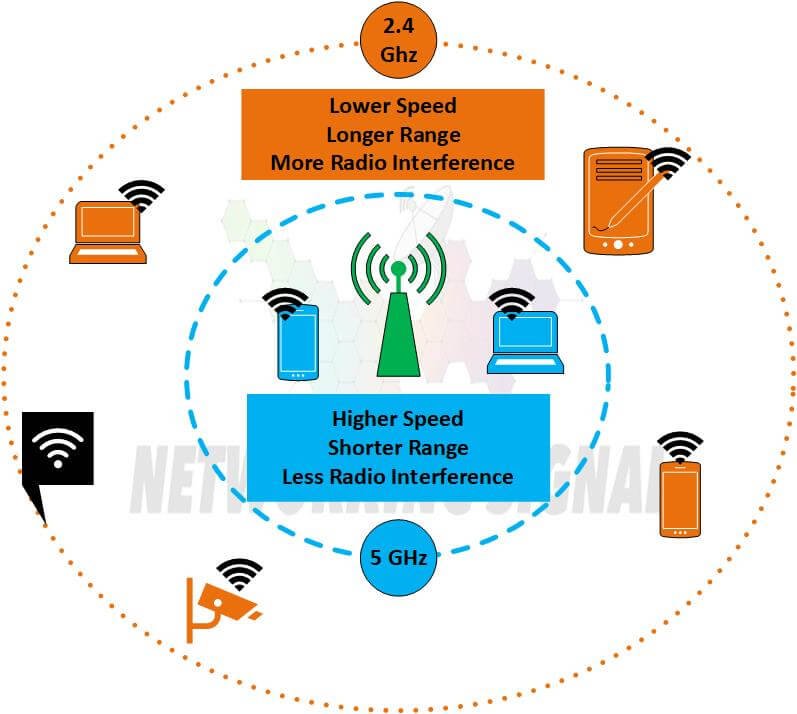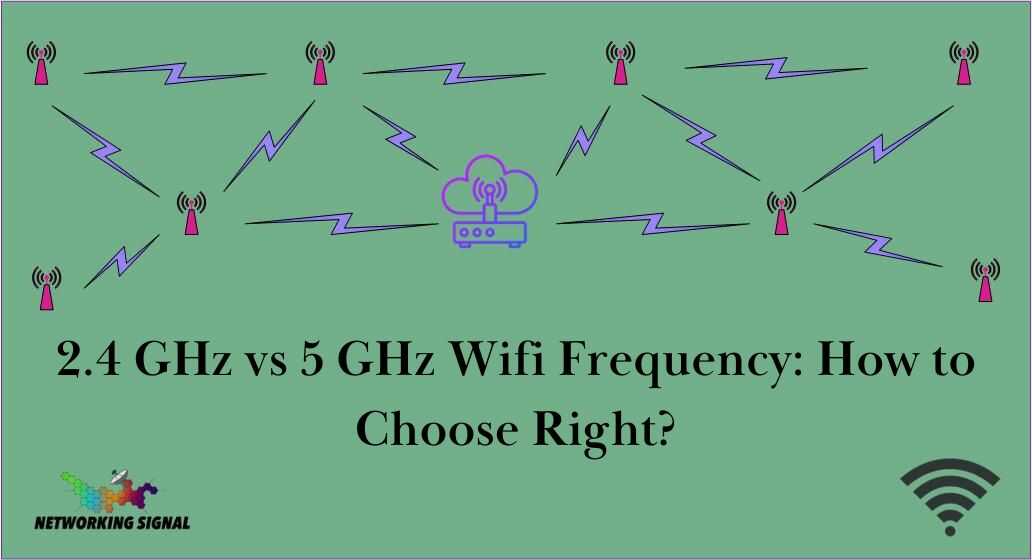What is GHz WiFi Frequency?
The GHz wifi frequency is the number of waves that travel through the air in a given period of time. The higher the number, the more data can be transmitted per second.
GHz wifi frequencies are used in many wireless applications, including WiFi routers and wireless LANs. The WiFI standard uses the 2.4 GHz and 5 GHz frequencies.
Most home WiFi networks use the 2.4 GHz frequency, which is also used by microwaves, Bluetooth devices, and some cordless phones. The 5 GHz frequency is less crowded and can offer better performance for applications that require high speeds, such as streaming video or gaming.
2.4 GHz vs 5 GHz wifi Frequency: Key Differences
Here are the key differences between 2.4 GHz and 5 GHz wifi frequencies:
- 2.4 GHz wifi frequency is better for longer range connections while 5 GHz wifi frequency is ideal for shorter range and faster speeds
- 5 GHz can be more congested because there are more devices using it than 2.4 GHz
- 2.4 GHz can penetrate walls better than 5 GHz
- 5 GHz is less likely to be interfered with by other devices than 2.4 GHz
- 2.4 GHz is the more common wifi frequency, while 5 GHz is newer and not as widely used yet.
Benefits of 2.4 GHz and 5 GHz wifi Frequency
2.4 GHz and 5 GHz frequencies offer different benefits for wireless applications.
2.4 GHz:
- Longer range than 5 GHz
- More compatible with older devices
- Better penetration through walls and obstacles
5 GHz:
- Faster speeds than 2.4 GHz
- Less crowded than 2.4 GHz
- Lower interference from other devices
Drawbacks of 2.4 GHz and 5 GHz WiFi Frequency
2.4 GHz:
- More crowded than 5 GHz
- susceptible to interference from other devices
5 GHz:
- Shorter range than 2.4 GHz
- Not as compatible with older devices
Which is the Right Between 2.4 GHz and 5 GHz: How to Choose?

Size of Your Home: If you have a large home, you’ll need a longer range, so 2.4 GHz is a better choice.
Number of Devices: If you have many devices connected to your network, 5 GHz may be a better choice to avoid congestion.
Types of Devices: If you have older devices that don’t support 5 GHz, you’ll need to use 2.4 GHz.
Obstacles: If you have walls or other obstacles between your devices and your router, 2.4 GHz is a better choice since it penetrates these obstacles better than 5 GHz.
Speeds: If you need the fastest possible speeds for gaming or streaming video, 5 GHz is the better choice.
How can you make sure your devices are using the correct frequency?
- Check the specifications for your device to see which frequencies it supports.
- If you have a dual-band router, it will support both 2.4 GHz and 5 GHz frequencies. You can usually select which frequency you want to use in the settings.
- Some devices, such as smartphones, will automatically switch between frequencies depending on the strength of the signal.
Which Wifi Devices We are using for 2.4 GHz and 5 GHz?
We are using different wifi devices for 2.4 GHz and 5 GHz.
For the 2.4 GHz band
- TP-Link TL-WR841N Wireless N300 Home Router
- Linksys E1200 Wireless-N 300Mbps Router
- NETGEAR Nighthawk AC1900 Smart WiFi Router
For the 5 GHz band:
- TP-Link Archer C7 AC1750 Wireless Dual Band Gigabit Router
- ASUS RT-AC66U B1 AC1750 Dual-Band WiFi Router

